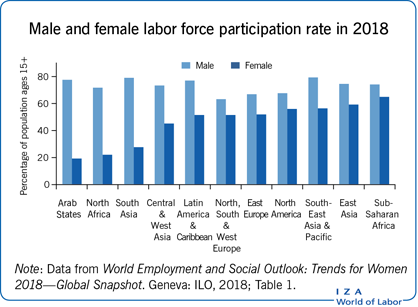Elevator pitch
Women consistently work less in the labor market and earn lower wages than men. While economic empowerment of women is an important objective in itself, women's economic activity also matters as a condition for sustained economic growth. The political debate on the labor market impacts of international trade typically differentiates workers by their educational attainment or skills. Gender is a further dimension in which the impacts of trade liberalization can differ. In a globalizing world it is important to understand whether and how trade policy can contribute toward enhancing gender convergence in labor market outcomes.

Key findings
Pros
Competition promoting effects of trade liberalization can reduce discrimination, by driving discriminating firms out of business or inducing firms to discriminate less.
Trade liberalization induces firms to invest in new technology, which can lead to manufacturing jobs being less physically demanding and more suited to women.
If countries have a comparative advantage in female-intensive products, or if trade policies benefit these industries, trade can increase women's relative employment and wages.
Cons
There is no clear global pattern in the trade–gender inequality relationship.
There is no evidence that trade-induced technological change reduces gender inequality in developed countries.
If capital-intensive exporters attract workers from labor-intensive sectors, the dilution of capital per worker can harm women more than men.
If exporting requires more committed workers, and women are (perceived as) less committed than men, trade can in-crease gender inequality.
There is no evidence to suggest that trade liberalization affects gender inequality in low-income country labor markets.